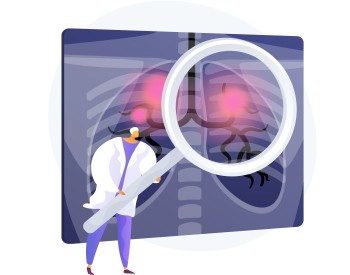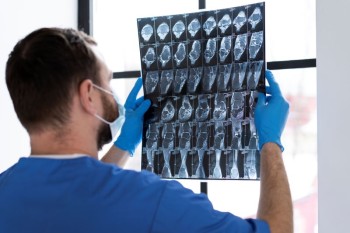
CT renal angiography plays a pivotal role in identifying and assessing abnormalities within the renal blood vessels.
CT Scan Renal Angiography in India with Cost
CT Renal Angiography Scan: A Comprehensive Guide
Introduction
Navigating the Waters of CT Renal Angiography
Renal angiography is a crucial diagnostic tool in the realm of medical imaging, specifically designed to explore the intricate vascular structures associated with the kidneys. In this article, we will delve into the details of CT renal angiography, shedding light on its significance, procedure, and applications.
Understanding CT Renal Angiography
What is CT Renal Angiography?
CT renal angiography, or computed tomography renal angiography, is a specialized imaging technique that employs X-rays to visualize the blood vessels surrounding the kidneys. It offers a detailed and three-dimensional view of the renal arteries and veins, aiding in the diagnosis of various renal conditions.
The Significance of CT
Renal Angiography
Unveiling Renal Vascular Abnormalities
CT renal angiography plays a pivotal role in identifying and assessing abnormalities within the renal blood vessels. From stenosis to aneurysms, this imaging modality provides a comprehensive picture, enabling accurate diagnosis and subsequent treatment planning.
Evaluation of Renal Transplants
In the context of renal transplants, CT renal angiography is instrumental in assessing the vascular health of the transplanted kidney. This is crucial for monitoring post-transplant complications and ensuring the longevity of the transplant.
The Procedure: A Step-by-Step Guide
Patient Preparation
Before undergoing CT renal angiography, patients are required to fast for a specified period. Additionally, relevant medical history and any potential allergies must be communicated to the medical team.
Contrast Injection
A contrast dye is injected into the patient's veins, enhancing the visibility of blood vessels during imaging. This step is crucial for capturing detailed images of the renal vasculature.
Image Acquisition
The CT scanner captures a series of X-ray images as it rotates around the patient. These images are then processed to generate detailed cross-sectional views of the renal arteries and veins.
Applications of CT Renal Angiography
Diagnosing Renal Artery Stenosis
CT renal angiography is highly effective in diagnosing renal artery stenosis, a condition characterized by the narrowing of renal arteries. Timely detection allows for prompt intervention, preventing complications such as hypertension and renal failure.
Identification of Renal Tumors
The detailed images provided by CT renal angiography aid in the identification and characterization of renal tumors. This is crucial for devising appropriate treatment strategies.
Advantages and Considerations
Advantages of CT Renal Angiography
Non-Invasiveness
Compared to traditional angiography, CT renal angiography is less invasive, reducing patient discomfort and the risk of complications.
High Sensitivity
The high sensitivity of CT renal angiography makes it a reliable tool for detecting even minor vascular abnormalities, ensuring a comprehensive assessment.
Considerations and Precautions
Radiation Exposure
While the benefits are significant, it's important to consider the exposure to ionizing radiation during CT renal angiography. The medical team carefully weighs the risks and benefits for each patient.
Conclusion
In conclusion, CT renal angiography stands as a cornerstone in renal imaging, offering a detailed and non-invasive means of assessing the intricate vascular network associated with the kidneys. Its applications range from diagnosing vascular abnormalities to monitoring renal transplants, contributing significantly to improved patient outcomes.
FAQs: Unlocking the Mysteries of CT Renal Angiography
1. Is CT renal angiography painful?
No, the procedure is generally painless. Patients might experience mild discomfort during contrast injection.
2. How long does a CT renal angiography take?
The procedure typically takes around 30 to 60 minutes, including preparation time.
3. Are there any side effects of the contrast dye used?
Some patients may experience minor side effects like nausea or a metallic taste, which usually subside quickly.
4. Can anyone undergo CT renal angiography?
While generally safe, pregnant women and individuals with severe kidney issues may need alternative imaging methods.
5. Are there alternatives to CT renal angiography?
Yes, alternatives include magnetic resonance angiography (MRA) and traditional angiography, each with its own set of considerations.
6. Is CT renal angiography safe for pregnant women?
Generally, it's avoided during pregnancy due to potential risks from ionizing radiation. Alternative imaging methods may be considered.
7. Can patients with claustrophobia undergo CT renal angiography?
Yes, as CT scanners are open and do not induce the confined feeling associated with some imaging machines.
8. How soon can one resume normal activities after CT renal angiography?
Most patients can resume normal activities immediately after the procedure, but it's advisable to have someone accompany them home.
9. Are there age restrictions for CT renal angiography?
There are no strict age restrictions, and the procedure can be performed on individuals of various age groups, depending on their health condition.
10. What happens if a patient is allergic to the contrast dye?
In cases of known allergies, the medical team takes precautions or may opt for alternative imaging methods to avoid adverse reactions.
(0)
Login to continue



